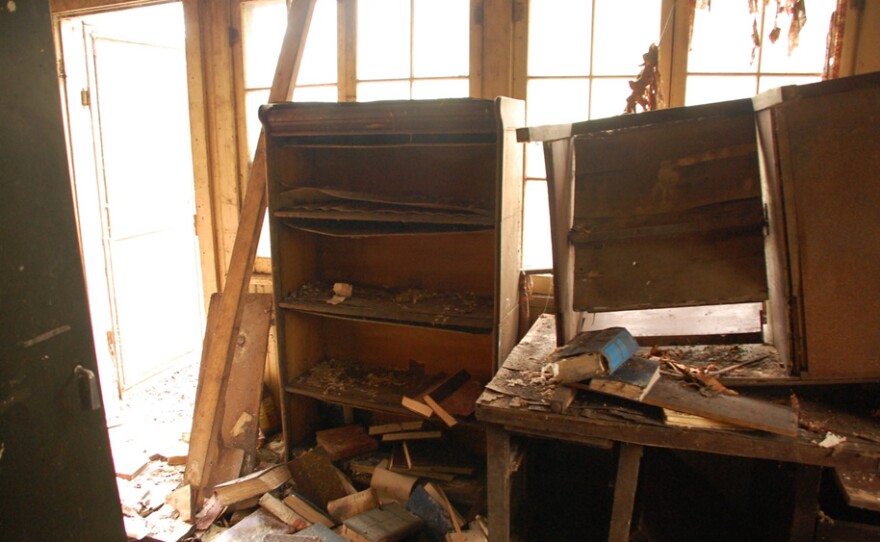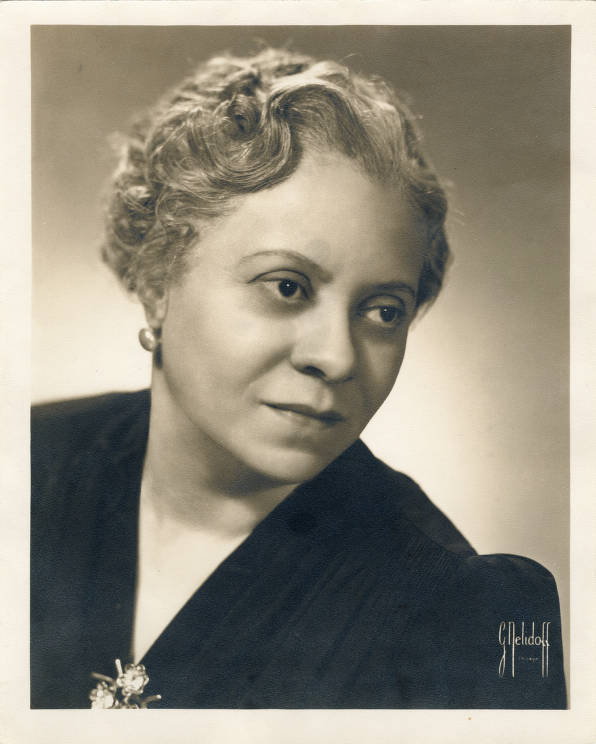Catalyst Quartet Releases UNCOVERED Vol. 2
Counterpoint: Florence Price and Marketing the Classical Canon
Virtually every piece of public-facing writing on Florence Price in the last five years or so begins at the same place—St. Anne, Illinois, 2009: a long-since-abandoned house that Price had once used as a summer getaway. Behind the walls of this dilapidated house lay a veritable treasure trove of Price’s musical manuscripts and personal papers. Dozens of works otherwise considered lost or that were completely unknown suddenly saw the light of day for the first time perhaps since Price’s death in 1953. In the intervening years, these findings in 2009 have almost completely transformed her legacy. One would be hard-pressed to find a program note or an album booklet from the last five years or so that doesn’t somehow frame Price’s music (even the pieces that had been widely publicly available since Price’s own lifetime) as being in the process of “rediscovery.” This is the case for the upcoming album Uncovered, Vol. 2 by the Catalyst Quartet. The quartet describe the series as “a multi-volume anthology highlighting string quartet works by historically important Black composers, which aims to bring greater awareness and programming of their music.” This second volume is dedicated exclusively to Price’s chamber music for strings, featuring four works for string quartet and two for string quintet, including four world premiere recordings of music from Price’s manuscripts.

Scholars like Kori Hill and Doug Shadle have already pushed back against this framing at length, arguing that claiming Price has been or is being “rediscovered” flatly ignores the fact that much of her music was never lost. It was always available for performance, or in unfortunately rare circumstances continued to be programmed despite a lack of mainstream recognition. Moreover, writers who frame Price in this way, Hill, Shadle and others argue, tend to rely on the passive voice, that is, they tend to write about Price’s years of “obscurity” without ever naming names, without ever acknowledging that it was largely a deliberate act to continue programming music mostly by the same dead white composers when Price’s music (at least a fair amount of it) was perfectly available. In this review I focus on the Catalyst Quartet’s recordings and packaging in light of this conversation, with a specific focus on how marketing, questions of nationalism, and the shadow of the Western Classical Canon continue to limit the ways we talk about Price, her marvelous compositions, and the legacy of classical music.
Before turning attention to these huge questions, I think it’s best to start with Price’s music itself, and the fine recordings presented here by the Catalyst Quartet and pianist Michelle Cann. The works on the album span virtually the entirety of Price’s active life as a composer, from the beginnings of her days in Chicago at the end of the 1920s in the form of two movements for an unfinished String Quartet in G Major all the way to her masterful 5 Folksongs in Counterpoint written in 1951, less than two years before her death. The works in question also highlight Price’s varied strengths as a composer. There are plenty of examples of her incorporation of various non-classical idioms (most notably that of Negro Spirituals, but also plenty of other hymns and popular tunes or styles) into classical forms, of course, but also on full display here is Price’s uncanny ability to couch her elaborate, modernist harmonic and structural schema in an almost-inevitable sounding, neo-Romantic guise. Take for example her settings of “Drink to Me Only with Thine Eyes” and “Swing Low, Sweet Chariot” from the 5 Folksongs in Counterpoint, where Price uses the familiarity and relative simplicity of these tunes as an invitation, or maybe a vehicle, to take the listener on increasingly distant harmonic and textural places without ever leaving the original tune behind. Couple the surprisingly subtle complexity of Price’s harmonic plans with an astounding mastery of contrapuntal treatment, and I don’t think it’s hard to see why Price in particular has become such a magnetic figure for re-evaluating concert programming: her music remains approachable and accessible to audiences with limited familiarity with classical music, and yet this accessibility doesn’t come at the cost of depth, or even respect for the audience. Her music is rich and layered, and above all written with that rare combination of well-honed craftsmanship and genuinely irreducible musical creativity that doesn’t require some fancy repertoire of musical terms to enjoy.
So it’s clear, then, to me why we love Florence Price so much and just why her music in particular finds itself in the middle of a programming renaissance. Her music rewards intimate study, but never demands it. On top of that, though, there’s something irresistible about the thought of dozens of masterpieces, written before their genius could possibly be understood, collecting cobwebs in a sleepy Illinois town, waiting for an enlightened future to unearth them. But of course, as Hill and Shadle have carefully pointed out, this is not historical fact, so much as a clever marketing trick. It’s the same kind of marketing trick we like to play with our ideas of Beethoven the tortured genius or with the scandalous premiere of Stravinsky’s Le sacre du printemps. It’s a kind of anti-historical framing that only has anything to say about how we view ourselves today and how we imagine our relationship to the past, but obviously in converting the past into mostly legend, couldn’t even say anything about the past if it wanted to. To be clear, I think this marketing trick is mostly well-intentioned, but it does ultimately come at a cost, and more than just one of historical accuracy for its own sake.

So, then, how exactly do the liner notes for this release frame Price’s life and work, and what are the broader implications of this framing, not only for Price’s music and legacy, but for classical programming more broadly? I think it’s worth being fair to the Catalyst Quartet up front by pointing out that the title of this series of albums seems to push back against the idea that the music of black composers is being “rediscovered.” “Uncovered” suggests to me anyways that something was deliberately hidden and that it is now being brought back to light. The world premiere recordings here aren’t “discoveries” but rather an amplification of sounds that some have tried to silence. I think it serves as a step in the right direction, if not maybe at least still a little self-congratulatory. However, the extent to which this release takes Hill and Shadle’s writings into account (if they actually do at all) mostly stops here.
For one, the liner notes, like many, many other blurbs about Price’s life, reference her compositional style as the fulfilment of some great prophecy by Antonín Dvořák.
Antonin Dvořák, who passed away before ever getting to know Florence Price’s music, championed the idea that a noble school of American composition would come from the folk music of Negro Spirituals. Many white American composers took up Dvořák’s call and the resulting music, perhaps due to its inauthenticity, didn’t carry the gravitas or nobility that Dvořák foresaw. However, the depth and beauty of the works on this disc are a powerful reminder that America’s voice, as prophesied by Dvořák, is found in the voices our history has overlooked and suppressed, the voices of the resilient and steadfast.
I find this framing in general fairly patronizing, but here I find the Dvořák myth even more frustrating than usual. The narrative itself is one that removes agency from Price as an artist, insisting that her stylistic choices had more to do with following a blueprint set out by a dead white composer than as a result of her own artistic skill and intuition. Moreover, the author’s unexplained reference to Price’s “authenticity” in using the music of Negro Spirituals seems to imply some kind of essential connection between black bodies and black music, the kind of racist musical essentialism that Karl Hagstrom Miller documents so thoroughly in his 2010 monograph Segregating Sound. However, I think it’s unfair to frame the Catalyst Quartet’s notes here as purposefully peddling in these sorts of ideas. Rather, they’re likely the accidental result of the sort of imprecise language that works much better than carefully sourced historical prose in the copy of a commercial product.
That said, what remains in any version of the Dvořák myth, regardless of how well written or sourced, is the implicit framing of Florence Price as a figure of American musical nationalism. I think I can understand the impulse to do this, because the idea is essentially that the canon of Great American Composers almost exclusively starts and ends with white dudes, with a handful of white women to speak of, and that by expanding that roster to include non-white composers, it can be made to more accurately reflect the body of American music and of the people who make up the United States in the first place. But I think there is quite a significant difference between being a composer who is American and being an American composer whose music is nationalist in character and content. It’s worth remembering that the national styles Dvořák was interested in cultivating/describing were in service of nation building, i.e. fundamentally and unquestionably a highly specific political project. And while the specifics of American nationalist projects were not the same for Dvořák, for Price, or even for us today, there are certain through lines of exceptionalism and colonial domination that seem not only irrelevant to Price as a person and an artist, but completely antithetical. The impulse to frame Price as a Great American Composer and especially as the heir apparent to the legacy of Dvořák, even if motivated by a desire to elevate her life and work, comes along with a “salvaging” of the same American Empire responsible for the racism and sexism she combatted throughout her life. In other words, the Price renaissance, we are to understand, is proof positive of the exceptionality of the United States because even if the US was directly responsible for these historical evils, that Price has now found purchase in American concert halls is ostensibly demonstrable evidence that the arc of American History bends toward justice.
…that Price has now found purchase in American concert halls is ostensibly demonstrable evidence that the arc of American History bends toward justice.
This Dvořák myth is ultimately inseparable from the legacy of the Western Classical Canon and Price’s place within or without it. “Price’s inclusion in the canon is surely long overdue,” the notes read. And later, on the subject of Price’s String Quartet No. 2 in A Minor “[a]lthough this will be the premiere recording, the Catalyst Quartet looks forward to the day when this work has the plethora of recordings and interpretations that it deserves, just as any other of the great quartets in the cannon [sic] has.” This desire to canonize Price strikes me as an impulse yet again to salvage some institution that otherwise risks becoming obsolete. And it seems at first like a logical fix. If the problem with the Canon is that it’s too restrictive and limiting, why not expand it? Why not open it up to include those we feel are left out? And yet I think this solution misses the point. The Canon, or any canon, is by its very nature limiting and nominally meritocratic. To expand it bit by bit is an exercise in futility, in part because there isn’t some fixed list of works or composers that actually constitute a Singular, Sole Canon, but more to the point, because a canon must be restrictive. There can only be a canon if there are also apocrypha. And if we’re able to admit that our understanding of the criteria for a canonical work or an apocryphal one change and evolve over time, it’s almost a certainty that if there is still a Classical Canon a century from now, we will still be talking about how and why it needs to change. It strikes me then as a dated and flawed way to try and understand a body of texts to begin with. If our current way of thinking excludes Price’s music, despite all evidence pointing to the aesthetic and historical value of these works, then what’s the point of clinging to it in the first place?
I think all of these questions and threads converge at the point of marketing and profitability. Without question, the origins of the Classical Canon have roots in those same 19th century nationalist projects discussed earlier, but it’s hard to imagine regional symphony orchestras in the 21st century continuing to program Brahms symphonies out of some belief in the superiority of Germanic symphonic development or something. Instead, I think some calcified versions of those cultural values intersect with the razor-thin profit margins orchestras or chamber groups contend with to create a cruel, only obliquely racist feedback loop in which the works orchestras want to program are the ones they know audiences want to hear and the works audiences want to hear are the ones they already know or at least have heard of. The Canon, in the 21st century anyways, is as much a marketing phenomenon as the “rediscovery” of Price’s work. And in order for new works to enter this marketing scheme, they’ve got to have a good hook. Whether for good or for ill, Price’s works were granted just such a hook in 2009.
My point in this review is not to set out a line-by-line list of grievances with the prose in the Catalyst Quartet’s liner notes, but instead to use the release of these important recordings as a lens into the broader questions of how and why classical music can be made meaningful for audiences in the 21st century. There is no question that the love Florence Price’s music is finally receiving from a lot of mainstream classical sources and ensembles is long-overdue and well-deserved, but I hope that by taking stock of the way we frame this love and perhaps what that framing says about our own cultural assumptions and desires, we might find a way to move beyond limiting, proscriptive programming practices that will create the Florence Prices of our own time.



